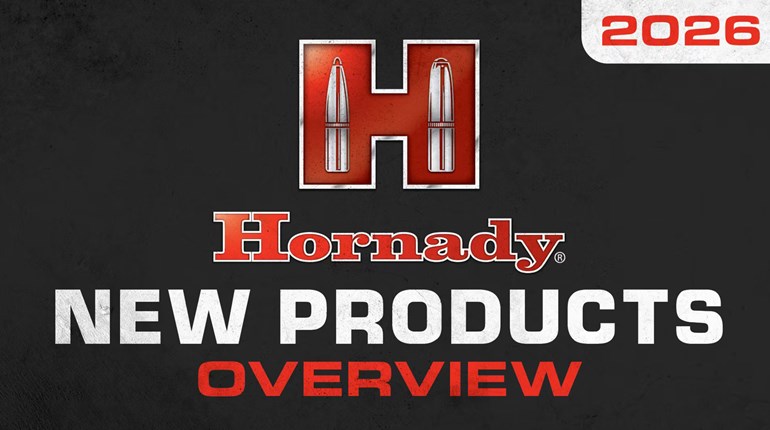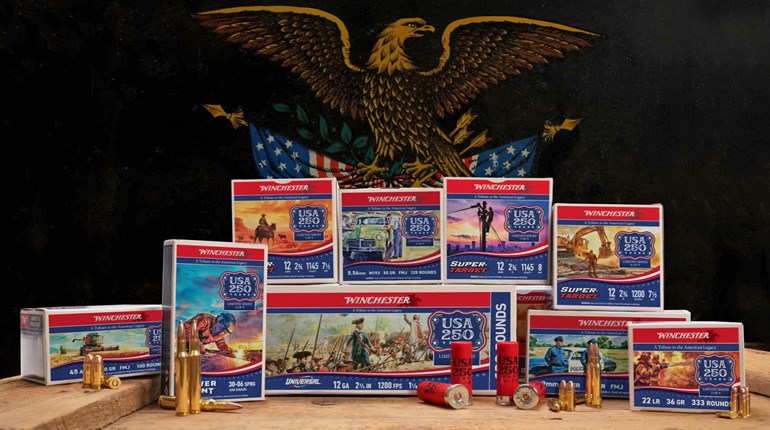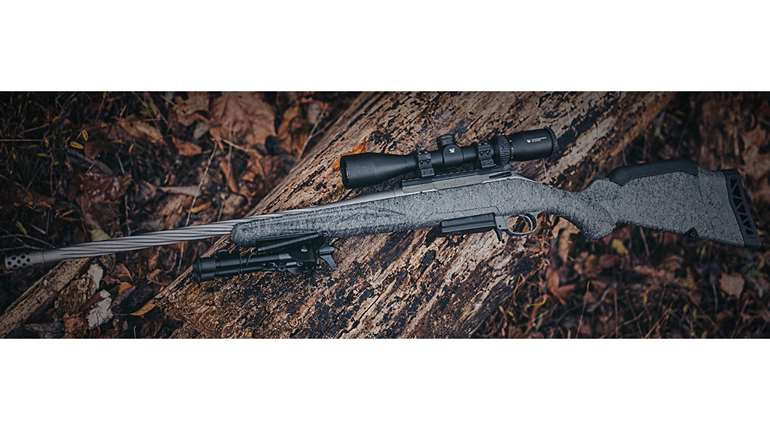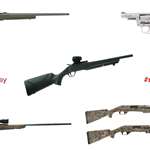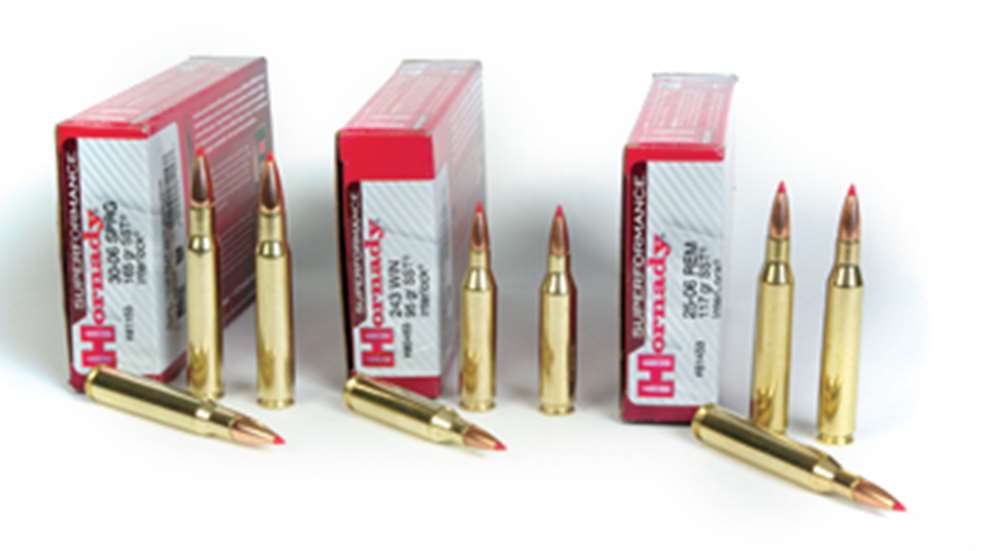
Hornady is making bold claims about its new line of hunting ammunition called Superformance. To see if it can back its brag, I headed to the range to run it through some serious testing. Here are the results.
How It Works
As Hornady developed its LEVERevolution line of ammo, ballisticians found that by blending powders to a specific cartridge and bullet, they could increase the performance of the cartridge without exceeding pressure standards. They did this by developing powders that had a more progressive burn rate. They used physical changes in the powder kernels, combined with new chemical coatings that control the rate of burn to actually change the way gunpowder burns. By slowing the progression of rate of burn, they could change the shape of the resulting pressure curves when viewed on a graph. Conventional powders produce a quick spike up in pressure, with a very sharp peak followed by a quick dropoff. The new powders produce a more gradual curve with a softer, more rounded peak. That means the average amount of pressure pushing against the bullet during its travel from chamber to muzzle is higher. The result is an increase in muzzle velocity without any increase in peak pressure.
For its Superformance line of ammo, Hornady custom blends its powders to a specific rifle cartridge and bullet to extract the optimum performance from that combination. The company claims its Superformance ammunition will increase your rifle’s muzzle velocity by 100-200 fps over average factory loads and produce accurate groups while yielding only slightly more recoil.
What It Replaces
Hornady’s Light Magnum line used technology that mechanically compacted the propellant in the case. This allowed a bigger charge of a slower-burning powder. This technique certainly increased velocity, but it had some problems; most notably, the heavier powder charge increased recoil.
The process was expensive, and in some cartridges accuracy was elusive. Hornady claims Superformance ammo brings a level of performance that is very close to Light Magnum, but without any of those problems.
Pressure Tests
I pressure-tested factory Superformance loads using an Oehler Model 43 PBL to plot pressure curves. I tested .30-06 165-grain SST ammo in both the Superformance and Custom lines. I fired into a Savage Range Systems Snail bullet trap.
While it is subtle to the untrained eye, there is a clear difference in the pressure graphs between the Superformance ammo and the Custom loads. In fact, my pressure curves looked a lot like those Hornady has published. Brag validated.
Velocity
At the range, I tested Superformance against Custom to see how it would stack up to Hornady’s claims of more velocity. I tested the .30-06 165-grain SST load for velocity in two barrel lengths of 22 and 24 inches. I also tested the .25-06 117-grain SST load in a rifle with a 24-inch barrel. (Many thanks to The Bullet Works for supplying the .25-06 Custom ammo during the current ammo crunch.)
I found that the .30-06 Superformance ammo had a 127 fps increase in the 24-inch barrel and 119 fps increase in the 22-inch barrel over the Custom load. Out of a 24-inch .25-06 rifle barrel, the Superformance ammo was 109 fps faster than the same bullet from the Custom line of ammo. The average increase in velocity for Superformance over Custom for all three test loads was 118.3 fps. Hornady claims a 100-200 fps gain, so this is in the low end of the range, but 118 fps is significant. If you doubt that, consider that with a 165-grain bullet the difference between the .308 Win. and the .30-06 Springfield is 100 fps. Brag validated.
Accuracy
I tested Superformance and Custom head to head for accuracy in two rifles. I fired the American Hunter standard of three, three-shot groups, and then I averaged the groups. Fired out of my Kimber .30-06, the Superformance was .20 inch more accurate. In the .25-06 the Superformance ammo also averaged .20 inch better.
Although I didn’t have .243 Custom ammo to fire in my Remington Model 700 for direct comparisons, I can tell you that I have owned this rifle for 30 years and have shot more groups with it than I can count. I don’t recall a factory load shooting any better than the Superformance 95-grain SST load—it averaged .82 inch at an average velocity of 2975.
My conclusion—at least in my rifles—is that Superformance’s accuracy is slightly better than Custom and, based on past testing, better across the board than Light Magnum. Brag validated.
Recoil
The theory of the “rocket effect” on recoil has been around the gun industry for several years. It theorizes that after the bullet escapes from the bore, the escaping gases that follow act like a rocket as they exit the bore to push back against the rifle, thereby increasing recoil.
Hornady’s testing shows that 85 to 90 percent of recoil occurs after the bullet exits the muzzle, and so its engineers are concluding that most of that is from the rocket effect. For the record, other prominent ballisticians in this industry dispute that conclusion.
Dave Emary, Hornady’s chief ballistician, has conducted a test that shows the recoil from Superformance is lower than that of Light Magnum and higher than that of the company’s Custom line. His conclusion is that because the new powder is more efficient and more of the powder is burned inside the barrel, the pressure upon bullet exit is lower. This in turn reduces the rocket effect of the escaping gases, making the recoil for the Superformance lower than Light Magnum.
I ran the numbers for the ammo I tested with a computer program that calculates recoil, using the weight of the bullet and powder charge and muzzle velocity. I used an 8-pound rifle for all calculations. In .30-06 the Superformance generated 20.9 ft.-lbs. of recoil, while the same load in the Custom ammo produced 19.4 ft.-lbs. In .25-06, the Superformance demonstrated 14.7 ft.-lbs. of recoil, while Custom measured 12.4 ft.-lbs.
I suppose it doesn’t matter to anybody except a gun geek how the recoil is generated. Most hunters just want to know how hard it kicks. For a less scientific but far more understandable test, two shooters conducted a blind test by using both Custom and Superformance loads in two different rifles, a .30-06 and a .25-06. We loaded the rifles without the shooter able to see the sequence of the cartridges, which were loaded randomly so that no pattern would emerge. Then the shooter fired the two cartridges quickly and declared which recoiled more. After multiple tests both shooters picked the Superformance as having slightly more recoil than Custom of the same caliber.
My data show that with Superformance, you pick up a small increase in velocity in trade for a small increase in recoil (compared to Custom). Or simply put, the laws of physics are still intact.
Is the brag validated? I could not test Light Magnum, which is what Hornady’s reduced recoil claim is compared against. But the recoil levels were as claimed for Superformance vs. Custom, so I would say yes, brag validated.
The Bottom Line
After shooting hundreds of rounds of Hornady ammo during some very rigid testing protocols, I think something very clear has emerged: Hornady’s new Superformance hunting loads raise ammo performance to the next level. It’s like Dizzy Dean said: “It ain’t bragging if you can do it!”
Cartridges Offered: .243 Win. through .458 Win. Mag.
Bullet Type: SST (lead-core, polymer tip); GMX (solid copper, polymer tip)
MSRP per Box of 20 (average): .243 Win. 95-grain SST, $35; .25-06 Rem. 117-grain SST, $39.48; .30-06 165-grain SST $36.93














